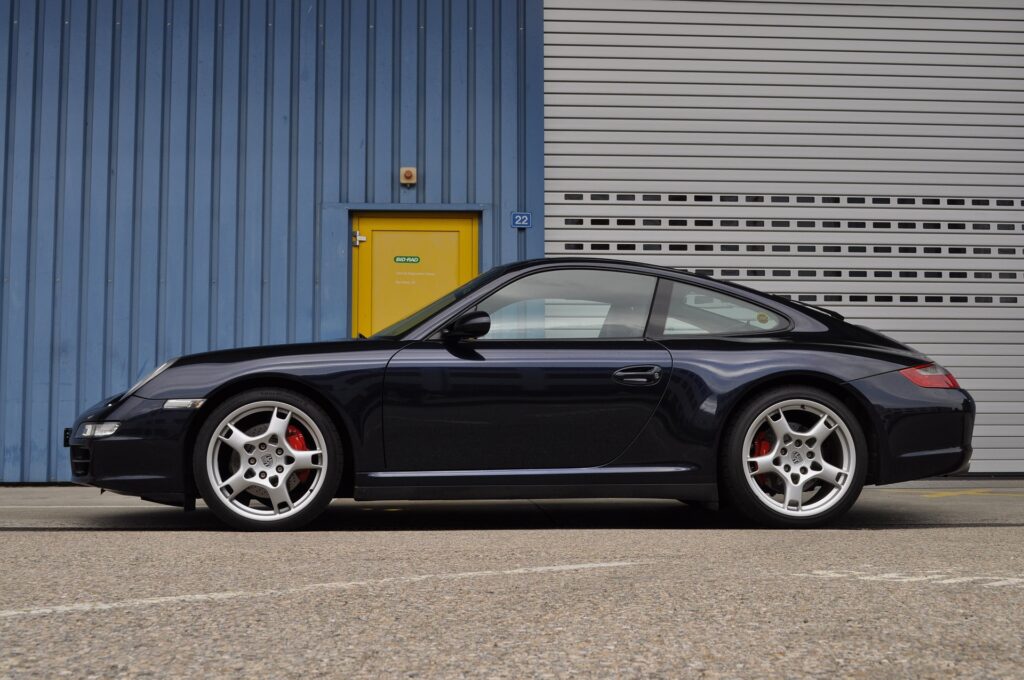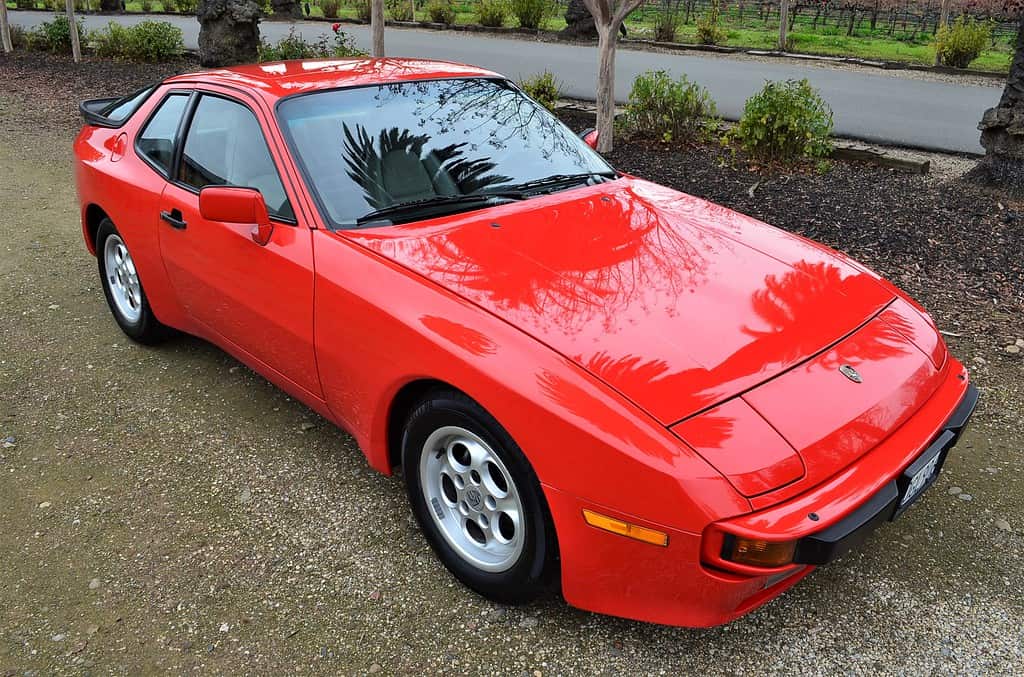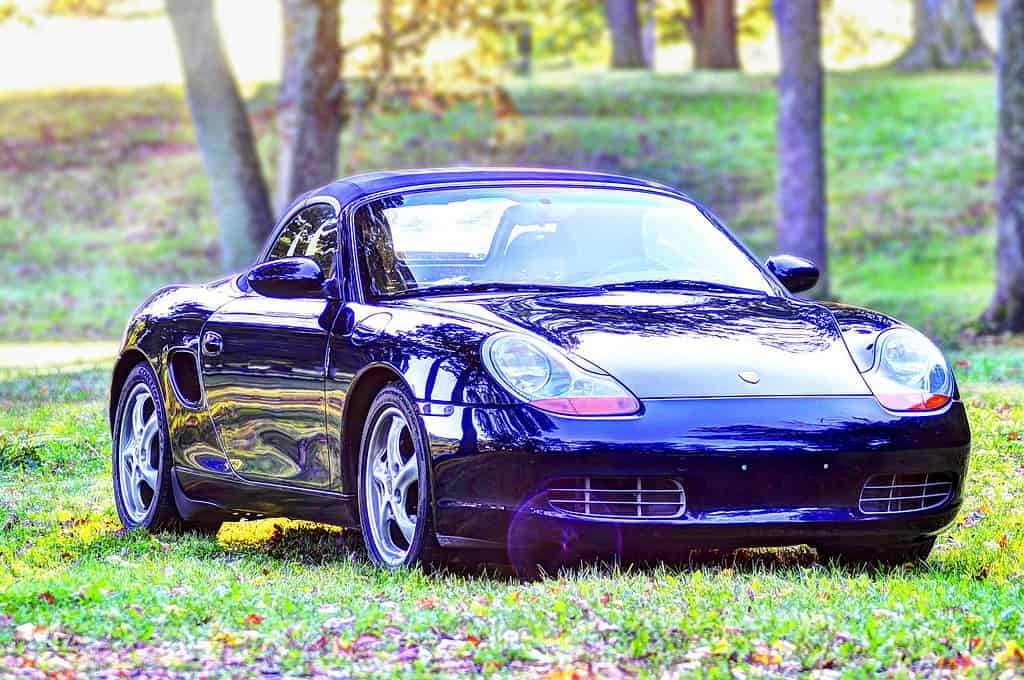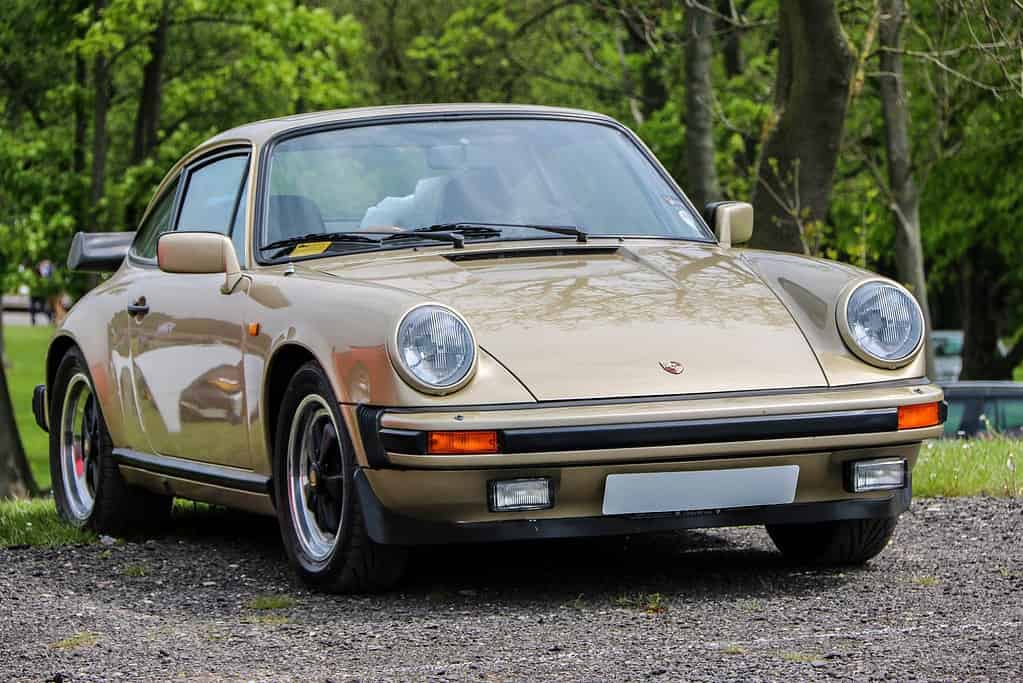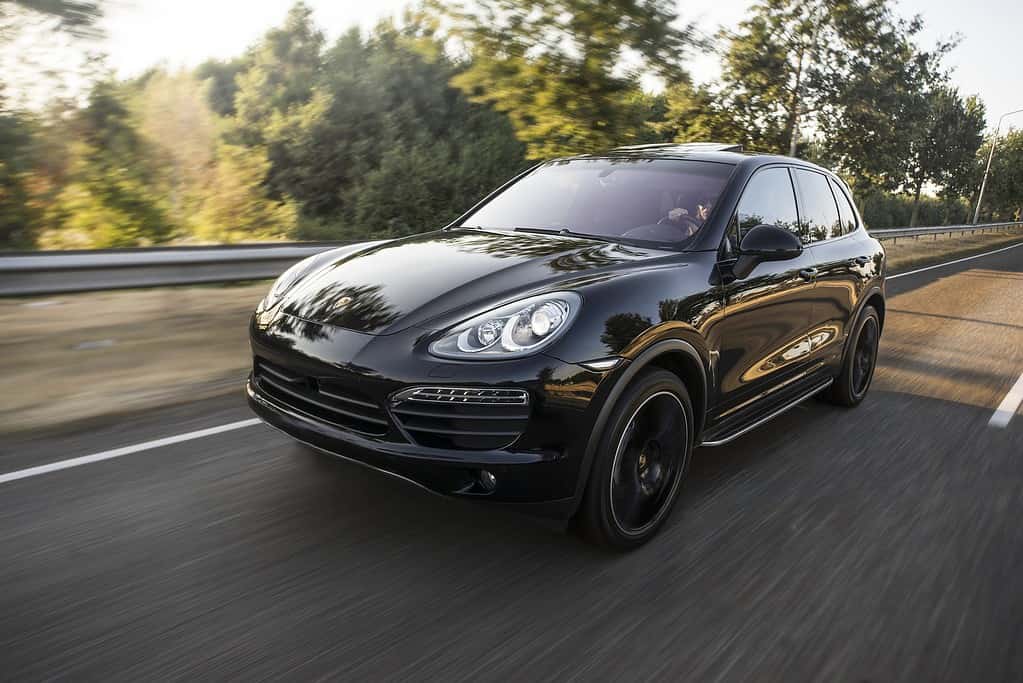If you are a car enthusiast, especially a Porsche fan, you probably adore the Porsche 911, a semi-classic sports car with timeless appeal that has remained remarkably resilient to changing trends. The Porsche 997 is one of the Porsche 911’s many successful designs and known internal designations of the Porsche 911 sports car that was produced and sold by the renowned German automaker Porsche in 2004. The first units of the Porsche 997 were released in the model year 2005.
The release of the Porsche 997 was magical; it represented a significant relaunch for the company when it was revealed that the new 911 generation would debut in July as a 2005 model. It introduced a new viewpoint of how fantastic the Porsche 911 was. If you are a fan of the Porsche 911, this article will describe the various models, characteristics, and qualities of the 997 to help you better understand the story and beauty of this timeless model.
The History of the Porsche 997
The first generation of water-cooled engines marked the beginning of the Porsche 997 story. The Porsche 996, which had the first water-cooled engine, first appeared in showrooms in 1998. The initial prototypes of the 996 began going through testing later that year after the design was finished by Porsche’s head designer Grant Larson and his team in 2001. In terms of performance and being the first flat engine to use water cooling, the 996 was a success. As time passed, consumers demanded more from sports cars. In addition to the performance, people wanted more functionality and beauty from the design. As a result, Porsche wanted the 996 to level up and revolutionized its design, leading to the making of the Porsche 997.
In the later months of 1998 to January 1999, the Porsche 997 development program began. In February 1999, head designer Grand Larson, along with his team, started working on the body design of the 997. In 2001, a final design was finally accepted following numerous reviews and the construction of full-sized clay models. Based on the newly established parameters, early prototypes were constructed in late 2001 for testing. With the goal to revolutionize the 996 and 997, the result of the Porsche 997 was more of an evolution rather than a revolution.
The First Porsche 997 Design
Early in 2001, the initial design for the 997 received approval, but it was not finalized until 2004. The first-ever design of the Porsche 997 had a rear bodywork of 88 mm (3.5 in) wider in the first iteration of the 996 than in the model it replaced. However, the return of oval headlights like those found on pre-996 Carreras with separate indicator units is the most obvious visual difference between the 997 and the 996 by this time. Although the interior had been redesigned and had new controls, it was more similar to the interiors of early 911s than it was of the outgoing 996.
The First Officially Released Porsche 997
After the initial Porsche 997 design was approved in 2001, Porsche continued to work on the model until the first Porsche 997 final model was completed in 2004. On May 7, 2004, Porsche officially announced that the new 911 generation, the Porsche 997, would debut in July as a 2005 model and feature two engine options:
- Carrera 3.6
- Carrera S 3.8
Since it was supposed to be an upgrade of the Porsche 996, there are features of the 996 that were optional before that are now available in the Porsche 997. First, the navigation module remained optional, however, the Porsche Communication Management (PCM) screen became the standard of the Porsche 997. Before, the Porsche Active Suspension Management (PASM) was an option only for the base 911 and standard on the 911 S version. In the Porsche 997, the PASM shock absorbers became standard and became firmer when the “sport” button was pressed.
In terms of stock wheels, there are also differences. While the 996 Carrera came with 17-inch stock wheels, the 997 Carrera came with 18-inch wheels, and the 997 Carrera S came standard with 19-inch wheels. To enhance safety, the standard Porsche Stability Management (PSM) of the 996 and older versions of 911, now had two new functions in the Porsche 997:
- By pre-pressurizing the brake system, more spontaneous braking was made possible when it was needed.
- The hydraulic brake power support made it easier to build up full brake pressure in an emergency.
With the release of the first 997, many were amazed at the difference in the design and look of the 997 compared to the 996 models. The body was more curved, the headlamps were once more rounded, and the interior was totally revamped. However, in terms of engine performance, the first 997 models were very comparable to the 996. The 3.6-liter engine, structural bodyshell, and roof shape of the 996 Carrera were all retained. In other words, the 997 Carrera was primarily a cosmetic and aesthetic upgrade at this point.
The Different Models of the Porsche 997
The 2005 Porsche 997 model quickly gained popularity after its release. Since it was a drastic upgraded design of the 911’s Porsche 996, the Porsche 997 was like a new brand. From 2005 to 2011, there were many successful models of Porsche 997 released with their improvements and special features. To paint a clearer picture of different types of Porsches 997 from 2005 to 2011, here are the different models of Porsche 997 and their attributes and qualities of these models.
Porsche 997 Cabriolet
Aside from the Carrera models, the first model made available for the 2005 model year was the Porsche 997 Cabriolet. It was intended to be both a conscious release for more enjoyable driving and a commitment to purism. Although the performance numbers for the Cabriolet versions are almost identical to those of the Porsche 911 cabriolet counterparts, the look and design are more aggressive.
The rear tail of the Porsche 997 Cabriolet is raised a little bit to account for variations in drag over the canvas top. Hard tops were available as factory options on the 997 Cabriolets and offered superior weather protection over the standard canvas top of the previous models of 996. The interior is even better; the upholstery and seat cushion were upgraded with top-quality leather, and they offer better lateral support compared to other 911 sports seats. Including the PASM feature, the body of the Porsche 977 Cabriolet was lowered further by 10 mm compared to the 996. The springs are also firmer and feature anti-roll bars.
Porsche 997 Club Coupé
Released as a 2006 model, the Porsche 997 Club Coupé was a limited edition to honor the Porsche Club of America’s 50th anniversary. It was announced that only 50 units were released. These 50 units of the Porsche 997 Club Coupé were X51 Powerkit-equipped and featured a special Porsche badging. The color of all fifty vehicles was a metallic blue called Azzurro California. This Porsche 997 Club Coupé was also an upgrade from the 996 not only in design but also performance.
The Porsche 997 Club Coupé has an engine power that was based on the first 997 Carrera model, however, they are the first generation of Porsche 911 sports cars to have the X51 Powerkit. This upgrade makes the 3.8-liter, flat-six-cylinder engine the most potent non-turbocharged engine offered in a Porsche 911 production, increasing peak horsepower from 355 to 381 and peak torque from 295 to 306. The X51 Powerkit stands out for its carbon fiber air cleaner housing, which increases the performance of this Porsche 997 model through upgrading several features in the engine, including:
- Larger throttle body
- Improved intake airflow
- Modified cylinder heads and exhaust manifolds
- Improved control unit
- Sports exhaust system
Porsche 997 Targa
The Porsche 997 Targa is the upgraded version of the Porsche 993 and 996’s Targa models. The Porsche 997 Targa was released from 2006 to 2011 with two versions, Targa 4 and Targa 4S. When compared to other Targa versions of other 911s, the Porsche 997 Targa’s engine performance is not significantly different. The maximum output of the water-cooled engine is 320 PS and 370 Nm of torque. The design and body features, however, are the main improvements.
The 997 Targa has a glass roof system, just like its predecessors. However, the roof can now be opened at any speed, sliding back a meter under the rear window, and dropping down 25 mm. The suspension has been altered in comparison to other Targa models because the roof adds an extra 60 kg to the vehicle’s weight. To improve aerodynamic stability, a tiny glass diffuser is elevated just above the windshield when the glass roof is retracted.
The 997 Targa, in contrast to earlier iterations, was only offered with all-wheel drive. Due to the heavier roof and all-wheel drive, Targa 4 models of Porsche 997 are a little bit slower than the hard-top Carrera models. In terms of interior design, the dashboard and seats are similar to Cabriolet, which features leather seats and improved lateral support. It also features the improved PASM sports suspension.
Porsche 997 Turbo
The 997 Turbo made its debut at the 2006 Geneva Auto Show. It is a fascinating upgrade to the original 997 Carrera model. The LED turn signal strips were integrated into the air intakes on the front bumper, which had undergone a significant redesign. The 997 Turbo used the same wider body shell of the all-wheel-drive models as the previous 911 generations, giving it the aggressive wide-stance typical of the Turbo designation.
Along with a retractable rear wing, other design modifications included large air vents on either side of the rear wheels and in the quarter panels. It had a greatly changed front bumper with integrated LED turn signal strips into the air intake. The 997 Turbo utilized the same wider body shell as earlier 911 generations, giving it the aggressive wide-stance emblematic of the Turbo designation. Along with a retractable rear wing, other design modifications included large air vents along both sides of the rear wheels and in the quarter panels.
The Porsche 997 Turbo was the first Porsche production car to use two BorgWarner VTG turbochargers in the engine. The intake systems for the turbochargers have two stages of resonance for better turbo performance. To reduce turbo lag at low speeds and to avoid unnecessary back pressure at high RPM, the Variable Turbine Geometry integrates vanes on the turbine wheel that modify their attack angle with exhaust speed.
Porsche 997 GT3
Together with the 997 Turbo, the GT3 variant made its debut at the 2006 Geneva Motor Show. Similar to earlier GT3 models, it was a means for Porsche to provide supercars for the services team as well as to remanufacture aerodynamic features for racing and competition. The 997 GT3 stood out from other 997 models because of many upgraded features from engine and design, including:
- Mezger engine
- Larger brakes
- Lowered suspension system
- Lighter-weight wheels
- New front bumper
The engine of the 997 GT3 has the same displacement as the Turbo but uses a new variable intake system in place of the turbochargers. 415 PS and 405 Nm of torque are the engine’s ratings. Its redline of 8,400 rpm is identical to that of the flagship 911 Carrera GT. The 3.6 L/3.8 L integrated dry-sump engines did not have the rear main seal issues that the 3.6 L dry-sump engine does. Additionally, the GT3 has a Zero-lift aerodynamic design, which is an electronically adjustable version of Porsche’s PASM suspension that produces only pure downforce when coupled with a track-focus.
Porsche 997 GT2
The Porsche 997 GT2 from the 911 generation set records for speed and power when it was first sold to the general public in 2007. Indeed, the 996 GT2 was a success, but the 997 GT2 outperformed it in terms of engine performance. The 997 GT2 has a similar look and design to its predecessor with a crisp and aggressive look because the mirrors, air intake, and bonnet now all feature upgraded carbon fiber. Additionally, it has a larger rear wing and an upgraded front lip.
The engine of 997 GT2 is based on the existing 3.6 L flat-6 engine which produces 680 Nm of torque at 2,200 rpm and 530 PS of maximum power at 6,500 rpm. The 997 GT2 has a rear-wheel drive design and features twin variable geometry turbochargers. It gains more power from newly designed expansion intake manifolds and shorter turbo intake manifolds.
Porsche 997 Performance Metrics
The Porsche 997 was an evolution of the 996 and other 911 models in terms of appearance and design, but it still has a fair amount of performance and engine upgrades. To provide you with a clearer picture, here are the performance metrics of each Porsche 997 model:
- 911 Carrera: Has a power output of 345 PS (254 kW; 340 bhp) at 6,500 rpm, 3.6 L Flat-6 with integrated dry sump, with a top speed of 290 km/h (180 mph). The zero to 97 km/h is 4.7 seconds.
- Porsche 997 Cabriolet: Has a power output of 345 PS (254 kW; 340 bhp) at 6,500 rpm, 3.6 L Flat-6 with integrated dry sump, with a top speed of 290 km/h (180 mph). The zero to 97 km/h is 4.9 seconds.
- Porsche 997 Club Coupé: Has a power output of 385 PS (283 kW; 380 bhp) at 6,500 rpm, 3.8 L Flat-6 with integrated dry sump, with a top speed of 303 km/h (188 mph). The zero to 97 km/h is 4.5 seconds.
- Porsche 997 Targa: Has a power output of 345 PS (254 kW; 340 bhp) at 6,500 rpm, 3.6 L Flat-6 with integrated dry sump, with a top speed of 285 km/h (177 mph). The zero to 97 km/h is five seconds.
- Porsche 997 Turbo: Has a power output of 500 PS (368 kW; 493 bhp) at 6,000 rpm, 3.8 L twin-turbocharged Flat-6 with dry sump, with a top speed of 312 km/h (194 mph). The zero to 97 km/h is 3.5 seconds.
- Porsche 997 GT3: Has a power output of 435 PS (320 kW; 429 bhp) at 7,600 rpm, 3.8 L Flat-6 with dry sump, with a top speed of 312 km/h (194 mph). The zero to 97 km/h is four seconds.
- Porsche 997 GT2: Has a power output of 620 PS (456 kW; 612 bhp) at 6,500 rpm, 3.6 L twin-turbocharged Flat-6 with dry sump, with a top speed of 330 km/h (205 mph). The zero to 97 km/h is 3.4 seconds.
The Bottom Line
The Porsche 911 generation is unquestionably a classic that many auto enthusiasts adore because it offers a classic appearance while also providing the comfort of modern technologies. The 997 models, which develop a new viewpoint and a new brand as one of the ongoing upgrades from the 911, are one of the most successful of the 911 generation. Given the significant design enhancements and improvements in engine performance and features, the 997 can be your garage queen, daily driver, or even your car for racing competitions. Regardless of how you use the Porsche 997, its beauty and performance are undeniable.

